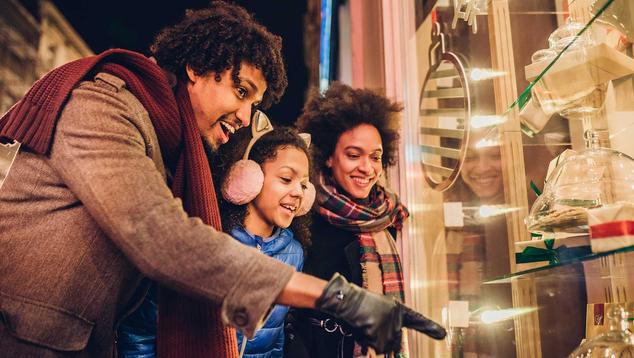Story Highlights
- Americans now plan to spend $867 on gifts, down from $932 in October
- November spending intentions are still in line with recent years
- More consumers foresee spending less on gifts than last year
WASHINGTON, D.C. -- Gallup’s latest measure of Americans’ Christmas spending intentions finds the public planning to spend an average of $867 on gifts this season. That is about average for the public’s spending forecast each November since 2019, which has ranged from $846 to $886.
The latest estimate, from a Nov. 9-Dec. 2 Gallup poll, is less promising for holiday retailers than Gallup’s initial look at consumers’ gift-buying intentions in October. At that time, Americans estimated they would spend an average of $932 on gifts, one of the highest October spending estimates Gallup has ever recorded.
The subsequent $65 decline in that figure is not unusual. In fact, in the 16 years since 2006 that Gallup has asked Americans in both October and November how much they plan to spend on Christmas gifts, the average amount declined in 11 of those years. It stayed about the same in two years (2010 and 2015) and increased in three.
In addition to the financial caution that seems to creep up on shoppers as the holiday season progresses, Americans’ dwindling personal savings rate this year amid continued high inflation may be curbing their ability, if not willingness, to spend as generously as they had intended.
More Consumers Also Say They Will Curb Their Spending
Separately, the poll asks Americans to say whether the amount they plan to spend on Christmas gifts is more, the same as or less than what they spent the year prior.
This indicator of consumer intentions is sending mixed signals, with the percentage planning to spend less (33%) and the percentage planning to spend more (17%) both the highest Gallup has seen in November in more than a decade. However, the 16-percentage-point difference in those planning to spend less rather than more skews more cautious than usual.
Meanwhile, 48% now say they will spend the same amount, only the second time in Gallup’s trend that this has not been the majority response.
How Intended Spending Has Related to Holiday Sales, Historically
Holiday retail sales typically increase year-over-year, with the average since 2000 being 3.9%, according to the National Retail Federation. However, the rate varies widely from one year to the next, with a better than 5% increase in sales in strong years (including last year’s 13.5% sales growth, which broke all recent records) to 2% or less in weak years.
The historical relationship between Americans’ estimated Christmas spending and actual U.S. holiday sales is not precise. Still, over the years, annual changes in Gallup’s November measure of spending intentions have been broadly indicative of the direction, if not magnitude, of actual spending.
- In years when Americans’ Christmas spending estimate was greater than the year prior or remained at a markedly high level, spending tended to be stronger than average. This was seen in 2003, 2005, 2010, 2011, 2014, 2017, 2020 and 2021. But the signal is not always perfect -- in 2006, 2015 and 2019, significant jumps in consumers’ average spending estimates were not borne out in sales, rising just 3% in each case.
- In years when Americans’ Christmas spending estimate was slightly lower than the previous year’s estimate, as it is today, or remained at a depressed level, holiday spending increased but by less than average. This occurred in 2000, 2001, 2002, 2009, 2012, 2013, 2016 and 2018. However, Gallup’s 2004 and 2020 surveys showing estimated spending essentially flat failed to foreshadow the strong sales (up 7% and 8%, respectively) that materialized in those years.
- In 2008, Americans’ spending intentions fell by an unprecedented 29% compared with the year prior, clearly presaging the nearly 5% decline in actual holiday retail spending that occurred that year.
The Implications for 2022 Holiday Sales
With Americans now predicting they will spend slightly less this Christmas than they predicted a year ago at this time, it’s probable that holiday retail sales will not match last year’s strong level -- but how much lower they will be is difficult to pinpoint from the data.
According to Gallup’s modeling of how spending estimates have related to actual sales in the past, the latest $867 estimate suggests sales could increase by between 3% and 6%. However, inflation could disrupt those predictions if Americans wind up spending more than they expected because of higher prices. Extended Black Friday sales and aggressive email promotions could also boost consumer outlays. On the other hand, the decline in consumers’ predicted spending since October and the increase in those saying they will spend less than last year could indicate Americans are ready to hit the brakes on their spending as the season draws to a close.
To stay up to date with the latest Gallup News insights and updates, follow us on Twitter.
Learn more about how the Gallup Poll Social Series works.




